AE Slides Ch1-7
Unit I: Managers and Managing: The Evolution of Management Thought
CH1
1. Learning Objectives
Define management—the process of working with and through others to achieve organizational objectives efficiently and effectively (Organisational performance).
Distinguish between three levels of management:
Top Managers: Responsible for overall strategic direction and decision-making; often interact with external stakeholders.
Middle Managers: Act as bridge between top and first-line managers; they implement policies and coordinate activities.
First-line Managers: Directly manage operational activities and oversee the work of non-managerial staff.
Identify three types of managerial skills:
Conceptual Skills
Human Skills
Technical Skills
Understand contemporary changes in management practices: The challenges brought by globalization, technological advancements, and the demands for innovation and adaptability in management strategies.
Discuss challenges faced by managers in a competitive global environment: Issues such as cultural diversity, technological integration, ethical business practices, and navigating global market dynamics.
2. Understanding Management
Organizations: A collection of individuals working collaboratively towards specified goals, encompassing a structure (like hierarchy) and governance to facilitate processes.
Managers: Individuals tasked with making decisions and supervising resources and personnel to achieve defined organizational goals.
Management: The integration of planning, organizing, leading, and controlling in order to achieve organizational objectives efficiently and effectively.
3. Resources in Management
Types of Resources:
People: Their skills, knowledge, and experience directly affect the organization’s performance.
Machinery: The tools and technology that support production and service delivery.
Raw materials: The basic materials used in the production process that are transformed into products.
Technology: Includes not only machinery but also software and systems that aid decision-making and operations.
Financial capital: The funding that allows organizations to sustain operations and invest in growth.
Loyal customers: The base that provides consistent revenue and enhances brand reputation.
4. Achieving High Performance: Managerial Goals
Organizational Performance: Defined as how well an organization utilizes its resources to enhance customer satisfaction and meet strategic goals.
+ Efficiency: how well or how productively resources are used. Ex: Wendy fryers: oil and and quicker.
+ Effectiveness: Measures the appropriateness of the goals a firm is pursuing and the degree to which the organization achieves those goals. Ex: Burger king: all-day breakfast success.
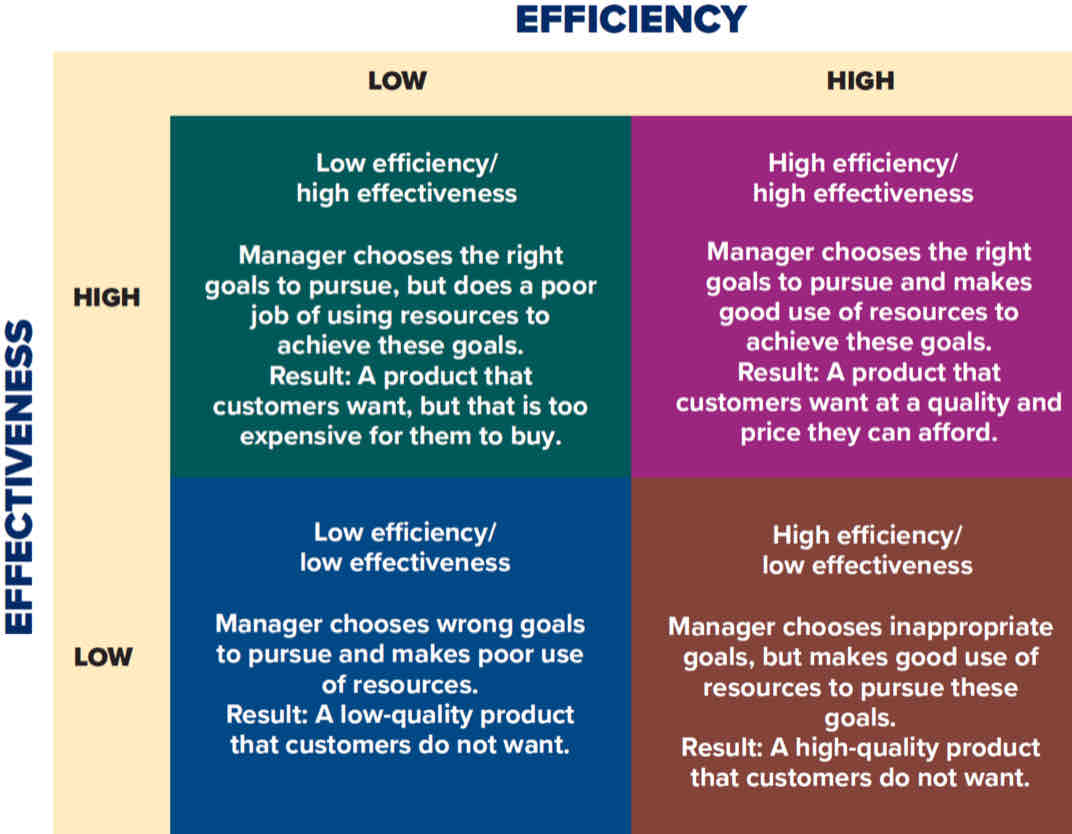
5. The Four Tasks of Management (POLC)

Explain the four principal managerial tasks:
① Planning: The proactive step in determining the goals of the organization and the means to achieve them effectively.
Steps in the Planning Process:
Identify and set achievable goals.
Develop comprehensive strategies to reach those goals, which includes forecasting future conditions and resource allocation.
② Organizing: Creating a structure (establishes roles, responsibilities, and relationships) for the organization and arranging resources for the optimal execution of plans.
③ Leading: Guiding and cultivate a motivating environment where communication flows freely, and teams work harmoniously towards shared organizational goals.
④ Controlling: Systematically monitoring performance and making adjustments as necessary to ensure that goals are met.
6. Ten Managerial Roles, 3 clusters (Henry Mintzberg)
Decisional Roles:
Entrepreneur: Commit resources to develop innovative G&S (goals & strategies) leads change initiatives within the organization.
Disturbance Handler: Moves quickly to deal with unexpected problems, facing the organization from external (oil spill) or internal environment (producing faulty G&S).
Resource Allocator: Determines how to distribute resources effectively among various projects and departments. Ex: Set budgets and salaries.
Negotiator: Engages in negotiations with suppliers, distributors and labour unions to finalize agreements with stakeholders.
Interpersonal Roles:
Figurehead: Acts as a symbolic leader and representative. Outline future goals to employees at company meetings. Ex: Opening a new corporate headquarter building, stating the company's ethical guidance and principles of behavior to follow in their dealing with customers and suppliers.
Leader: Provides direction and motivation, fostering a positive environment.
Liaison: Acts as a bridge between various departments and external stakeholders. Ex: Establish alliances between firms to share resources, reach agreements, work in joint projects.
Informational Roles:
Monitor: Gathers and analyzes information regarding the organization and its external environment, takes corrective action to improve their performance. Watch for changes in the environment that may affect the firm's future.
Disseminator: Shares crucial information within the organization.
Spokesperson: Represents and communicates the organization’s interests to outsiders. Ex: Launch a national advertising campaign to promote new G&S, gives speeches to inform local community about company's future intentions.
7. Levels and Skills of Management
7.1 Levels of Management
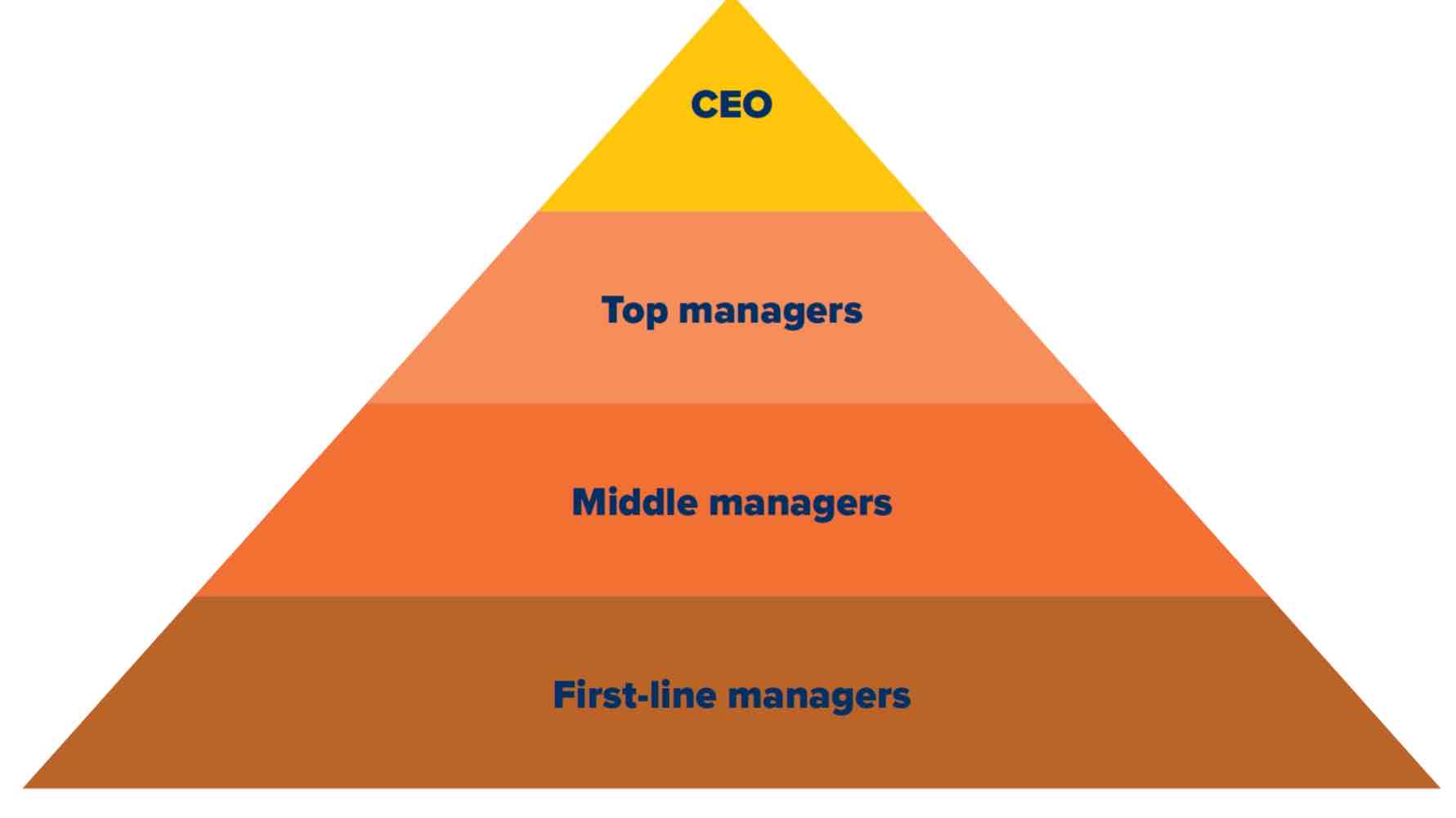
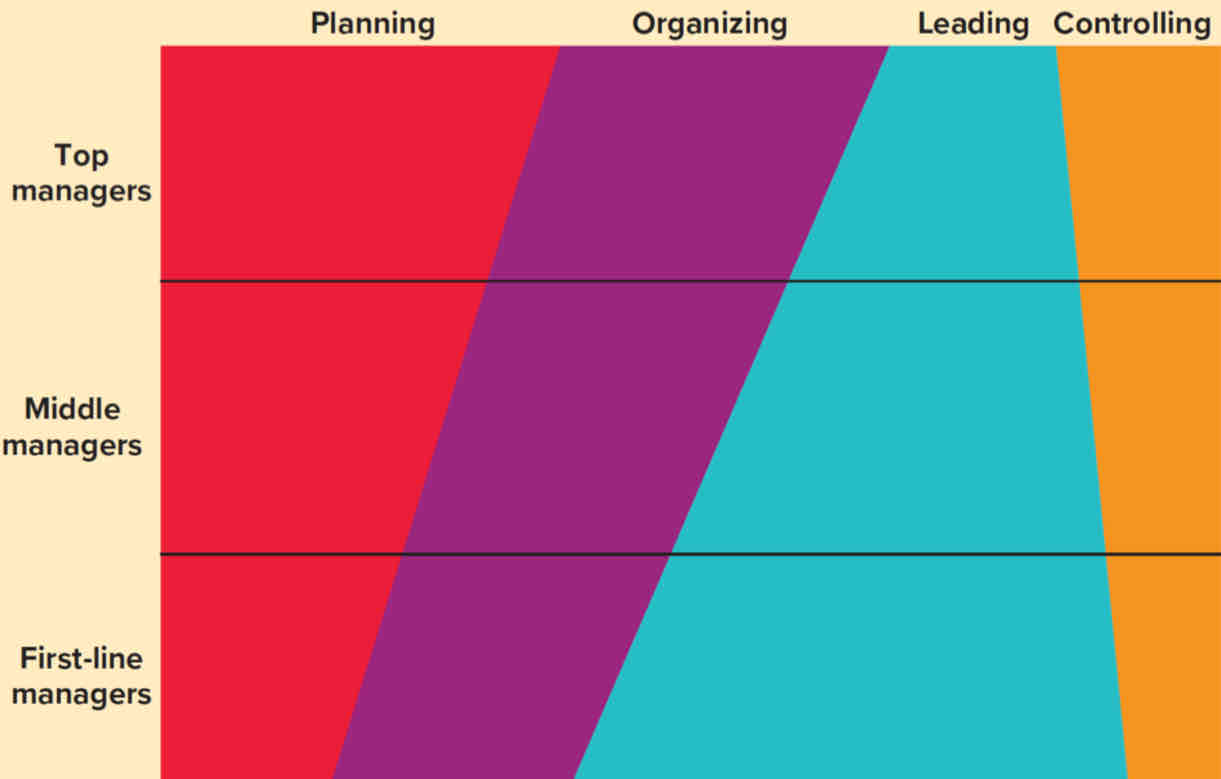
Top Managers: Responsible for the overall direction of the organization, making decisions that affect its long-term success.
Middle Managers: Implement the strategies set by top management, coordinating between departments and ensuring that first-line managers are effectively executing plans.
First-line Managers: Directly oversee non-managerial employees and day-to-day operations, ensuring immediate tasks are completed efficiently.
7.2 Managerial Skills
Conceptual Skills: Essential for viewing the organization as a whole and understanding how different aspects interrelate; analyses and diagnose a situation, distinguish cause & effect.
Human Skills: Ability to understand, alter, lead and control the behavior of individuals. Creating a good working atmosphere and facilitating teamwork; an essential interpersonal abilities that enable managers to communicate, motivate, and lead teams effectively.
Technical Skills: Specific knowledge and capabilities that are necessary to perform specialized tasks within the organization.
+Core competency: specific departmental skills, knowledge and experience that allows one organization to outperform another (have a competitive advantage).
8. Contemporary Management Changes
Restructuring: downsizing and redefining roles among managers and employees to adapt current demands→ eliminating the jobs of a large number of top, middle & first-line agents & non-managerial employees.
Outsourcing: contracting out specific business functions to external firms(usually abroad) for efficiency and cost-saving purposes. Ex: perform work the company previously perform itself.
Empowerment: management philosophy that encourages employees to take initiative and make decisions, contributing to enhanced motivation and job satisfaction. Involves giving employees more authority and responsibility over how they perform their work activities. Ex: Value corporation has no managers or hierarchy control, employees pick their projects.
Self-managed teams: groups who assume collective responsibility for organizing, supervising and controlling their own work activities.
9. Challenges for Management in a Global Environment
Maintaining competitive advantage, managing a diverse workforce, leveraging technology, adhering to ethical standards, and developing effective crisis management strategies.
Ethical Responsibilities: The need for managers to balance the interests of various stakeholders while promoting ethical practices within the organization, fostering a culture of responsibility and integrity.
CH2
1. Evolution of Management Thought
1.1 Job Specialization & Division of Labor (Adam Smith, 18th)
Focuses on increasing efficiency through job specialization, leading to enhanced productivity by allowing workers to become adept at specific tasks (Ex: Factory lines, specialize in one or few).
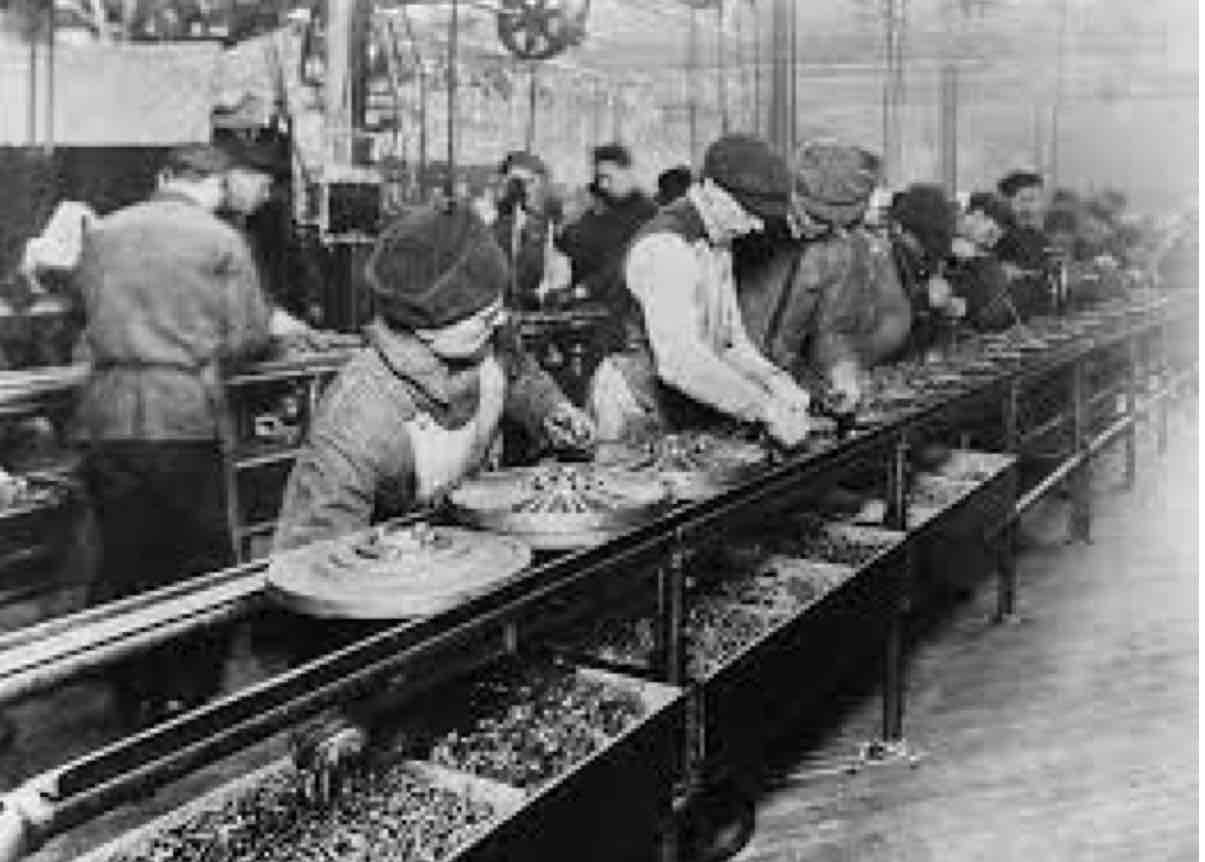
1.2 Scientific Management (F.W. Taylor)
Focus on systematic task analysis (relationships between ppl& task); includes selecting, training, and rewarding. To readjust work process (Streamlining tasks, breaking into small tasks) to achieve efficiency.
Principles:
Study: Study the way workers perform tasks, gather all the informal job knowledge, and experiment ways of improving how tasks are performed.
Codify: Codify the new operating methods into written rules and standard procedures.
Select: Select workers who possess abilities that match the needs of the task, and train them to perform according to the standards .
Establish: Establish a fair or acceptable level of performance for a task, and develop a pay system that provides reward for performance above the acceptable level.
Problems-Worker Resistance: Increased workloads without proportional pay led to dissatisfaction.
The Gilbreths: Frank and Lillian Gilbreth, followers of Taylor:
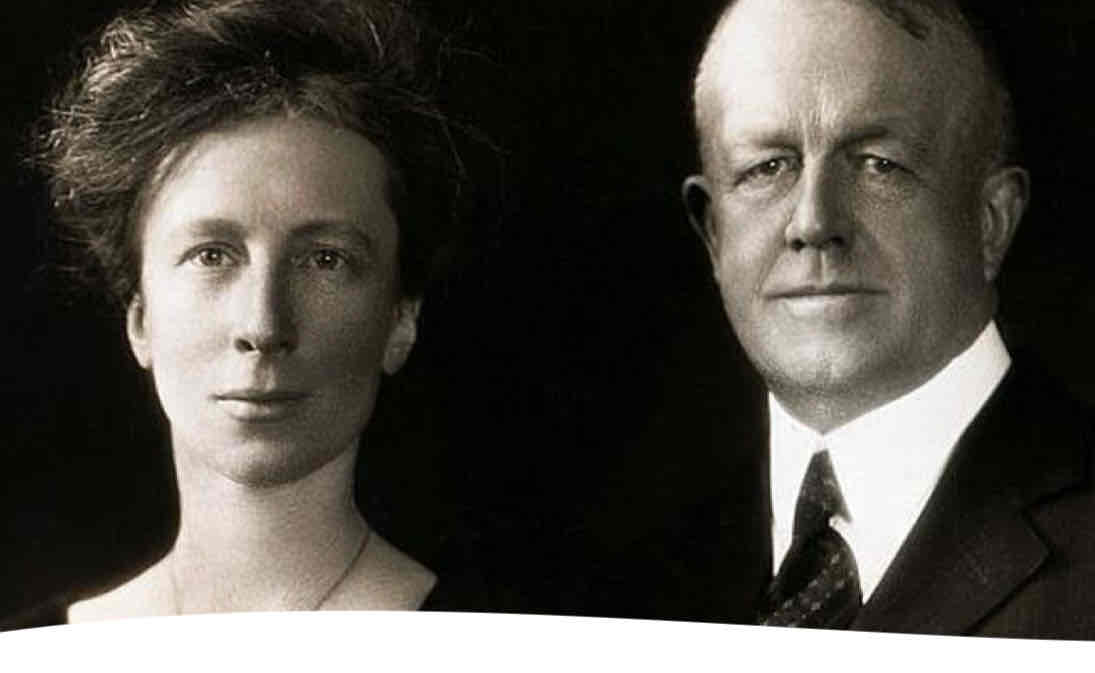 →Analyze individual’s action necessary to perform a particular task and emphasize breaking down tasks into components.
→Analyze individual’s action necessary to perform a particular task and emphasize breaking down tasks into components.
Find better ways to perform each component action.
Reorganize each component actions so as a whole could be performed more efficiently at less cost in time and effort.
1.3 Administrative Theory (Max Weber, Henri Fayol)
Emphasizes the organization’s formalized structure and management systems, supported by the 5 concept of bureaucracy from Max Weber and 14 principles from Henri Fayol to optimize efficiency.
Authority: Power to hold people accountable for their actions and make decisions concerning the use of resources.
Rules: formal written instructions that specify actions to be taken under different circumstances to achieve specific goals. Ex: If A happens, then do B.
Standard operating procedures (SOPs): Sets of written instructions about how to perform certain aspects of task. Ex: Which parts of a machine must be oiled or replaced?
Norms: unwritten, informal codes that describe how people should act in particular situations and are considered important by most members or organizations.
Max Weber's principles of bureaucracy
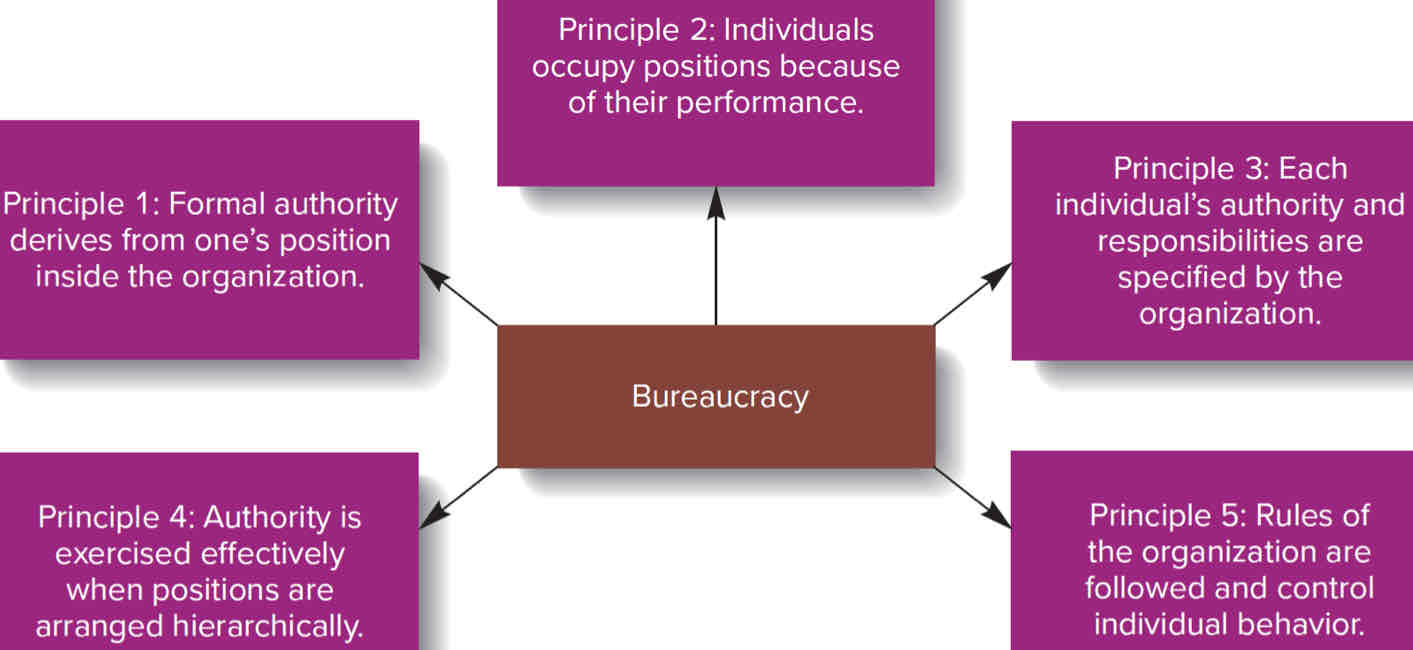
Henri Fayol’s 14 Principles of Management
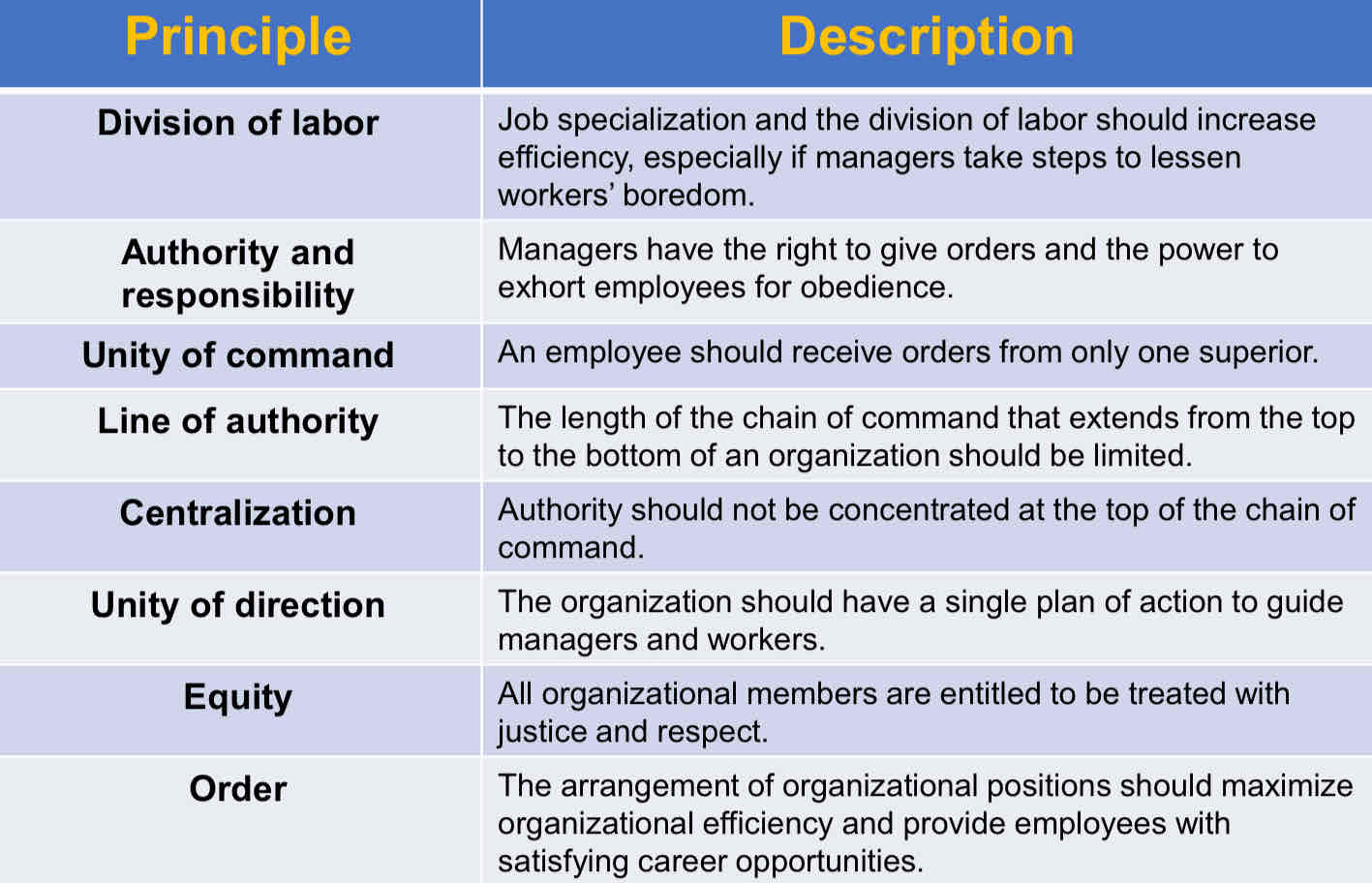
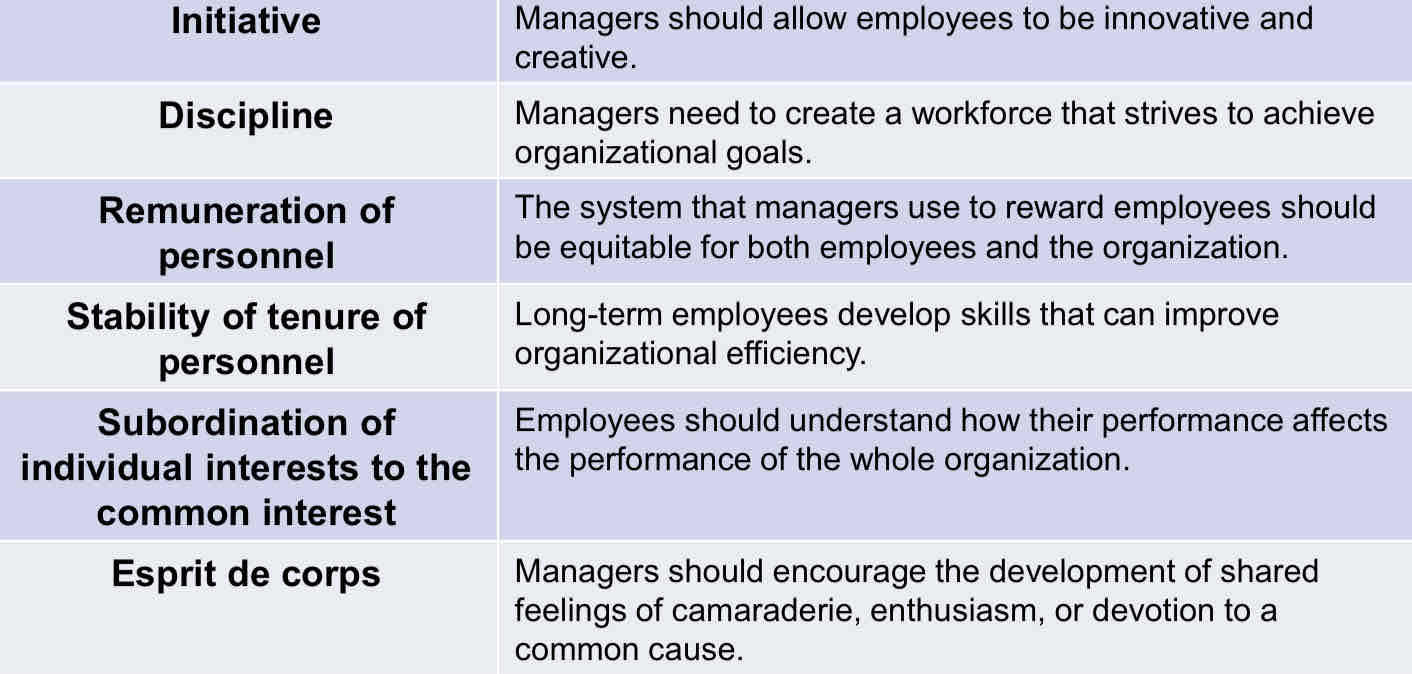
1.3 Behavioral management Theory (Mary Parker Follett, Elton Mayo)
The study of how managers should behave to motivate employees and encourage them to perform at high levels and be committed to the achievement of organizational goals.
Mary Parker Follett:
Concerned that Taylor ignored the human side of the organization.
Suggested workers help in analyzing their jobs.
Suggested if workers have relevant knowledge of the task they should be in control of the work process.
Hawthorne effect:
Workers’ performance affected by their attitudes about their managers.
Led to the human relations movement (*management approach that advocates the idea that supervisors should receive behavioral training to manage employees in ways that elicit their cooperation and increase their productivity.)
The Hawthorne Studies and Human Relations:
Informal organization: system behavioral rules and norms emerge in group.
Organizational behavior: factors impact on how individuals and groups respond to and act in organizations.
1.4 Theory X & Y (Douglas McGregor)
• Theory X: negative assumptions
Manager’s task is to supervise workers closely and control their behavior.(Ex: worker is lazy, dislikes work, try to do as little as possible.)
strict work rules
well-defined system of rewards and punishments
• Theory Y: positive assumptions
Manager’s task is to encourages commitment to organizational goals. (Ex: workers aren’t inherently lazy, don’t naturally dislike work, will do what’s good for the firm.)
decentralize authority
provides chances to be imaginative and exercise initiative, self-direction
make sure employees have the resources necessary to achieve goals
1.5 Management Science Theory
Contemporary approach to management that focuses on the use of rigorous quantitative techniques to utilize resources of producing goods and services.
Quantitative management:
Utilizes mathematical techniques, like linear programming, modeling, simulation, and chaos theory. Ex: Inventory management practices, New factory locations.
Operations management:
Gives managers a set of techniques to analyze firm’s production system to increase efficiency. Ex: How to acquire raw materials and distribute finished products more efficiently?
Management information systems
Gives vital info for effective decision making about occurring events in & external environment. Ex: Toyota Production System (TPS).
1.6 Organizational Environment Theory
Organizational environment
Set of forces and conditions that operate beyond firm’s boundaries but affect a manager’s ability to acquire and utilize resources. Ex: RM to produce goods.
1.7 The Open-Systems View
System takes resources from its external environment → transforms into G&S → sent back to where they’re bought by customers.
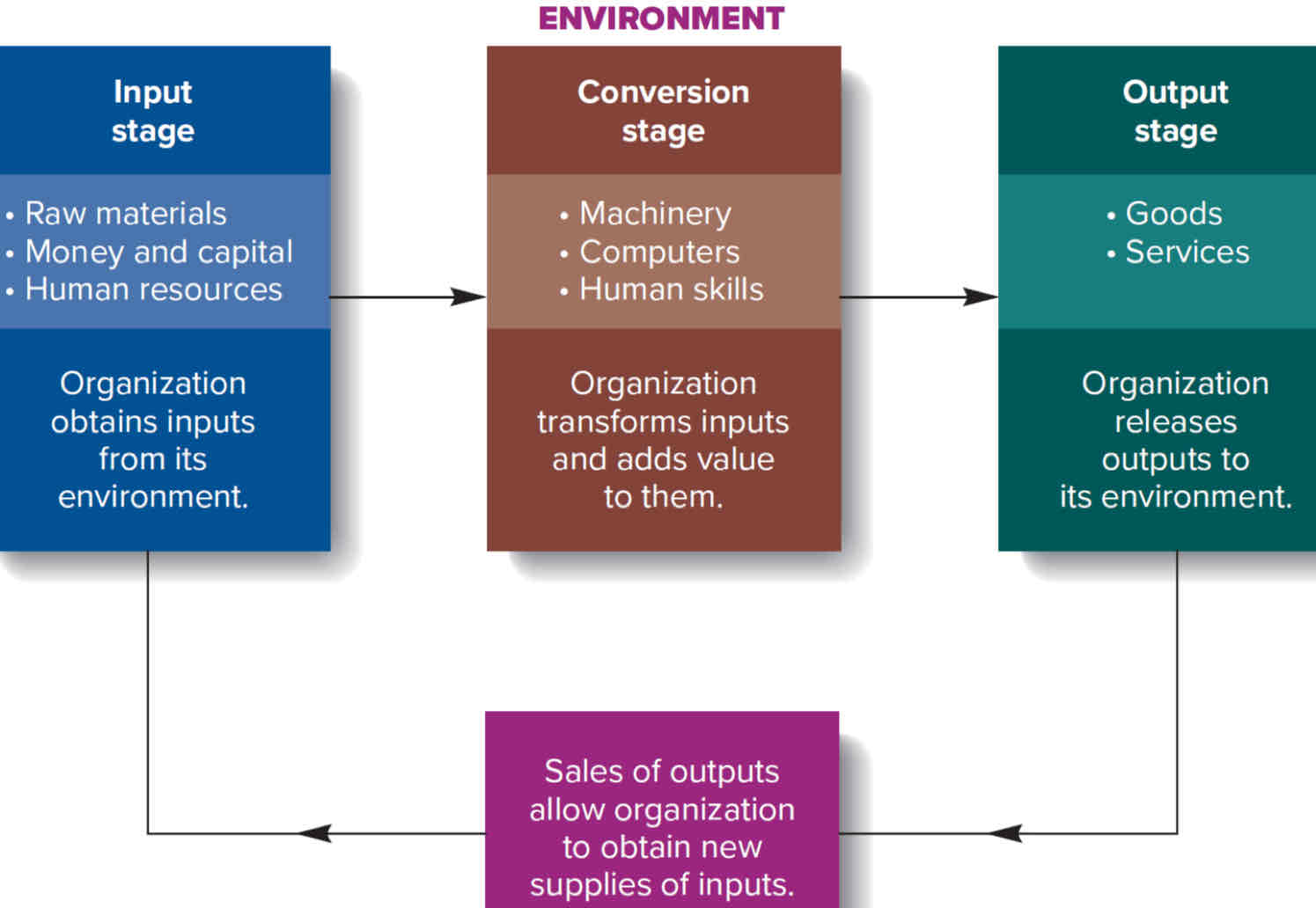
Closed system
Self-contained system that isn’t affected by changes in external environment. Likely to experience entropy(*tendency to lose its ability to control itself and, thus, dissolve and disintegrate.)
Synergy
Combine actions of individuals and departments, only possible in an organized system. Ex: Teams composed of ppl from various departments in decision making.
1.8 Contingency theory
Idea that structures and control systems they choose depends on characteristics of external environment in which they operates. #There’s no one best way to organize.
Mechanistic structure:
Centralized authority
specified tasks and rules
employees are closely supervised.
Efficient in a stable environment. Ex: McDonald.
Organic structure:
Decentralized authority to middle & first-line managers
tasks and roles are left ambiguous to encourage employees to cooperate and quickly respond the unexpected. (Adapt)
Efficient in a rapid changing environment. Ex: Google, Apple.
Dynamic Capabilities
Firms have unique ability to build, integrate, and reconfigure processes to address rapidly changing internal & external environments.
Sensing: Identifying and assessing opportunities outside the company. Ex: Steve Jobs recognizing consumers need for smaller, more attractive mp3 players.
Seizing: Action of mobilizing company resources to capture value for the organization. Ex: iPod, alternative to competitive products.
Transforming: Ability to continue making changes as needed to maintain success. Ex: Organizational shift to expand computer product line to include digital music streaming.
Unit II. Culture, ethics and social responsibility
CH3
Key Concepts:
- Organizational Culture: Shared beliefs, values, and norms (Schein). Examples include IDEO’s playful approach vs. Citibank’s formal approach.
- Values and Norms: Terminal values guide goals; instrumental values guide methods.
- Attraction-Selection-Attrition (ASA) Framework: Organizational culture is shaped by employee personality profiles through hiring and retention.
Key Figures:
- Mary Parker Follett: Emphasized the human side of management, collaboration in task design.
- Elton Mayo & The Hawthorne Studies: Identified the importance of worker attitudes on productivity (Hawthorne Effect).
Unit III. Managing in Global and Multicultural Environments
CH4
- Ethical Frameworks: Differentiates societal, occupational, and individual ethics.
- Stakeholder Theory: Companies have responsibilities to various groups, including shareholders, employees, customers, and society.
- Corporate Social Responsibility (CSR): Ranges from obstructionist to proactive approaches, with socially responsible companies actively addressing stakeholder needs.
Ethical Models:
- Utilitarian, Moral Rights, Justice, and Practical Decision Models: Tools for ethical decision-making in business.
CH5
- Diversity Dimensions: Includes age, gender, race, socioeconomic background, and sexual orientation.
- Diversity Management Roles: Managers as figureheads, liaisons, spokespersons to support diversity and fairness.
- Glass Ceiling: Barriers faced by women and minorities in career advancement.
Legal Aspects:
- EEO Laws: Covers laws against discrimination (Civil Rights Act, ADA, etc.) ensuring fair treatment in the workplace.
Unit IV. Multi-criteria decision-making techniques
CH6
- Global Environment: Distinction between the global task environment (immediate stakeholders like suppliers) and the general environment (economic, technological, political forces).
- Globalization: Forces connecting economic, political, and social systems, e.g., trade agreements, technological advancements.
- Cultural Differences: Hofstede’s model, including individualism vs. collectivism, power distance, uncertainty avoidance.
Global Decision-Making:
- Adaptability to Local Cultures: Managers need cultural sensitivity and adaptability for effective global operations.
CH7
- Types of Decisions: Programmed (routine) and nonprogrammed (unique, complex) decisions.
- Decision-Making Models:
- Classical Model: Assumes rationality and access to complete information.
- Administrative Model (Simon): Recognizes bounded rationality and incomplete information.
- Bias in Decision-Making: Cognitive biases like overconfidence, framing effects, and groupthink can impair judgment.
Creativity in Decision-Making:
- Group Decision Techniques: Including brainstorming, devil’s advocacy, and dialectical inquiry to improve decision outcomes.